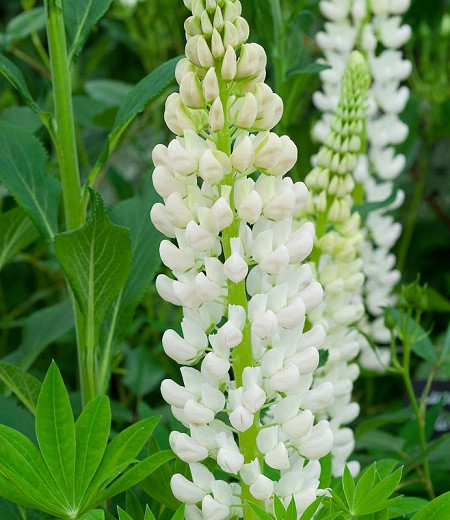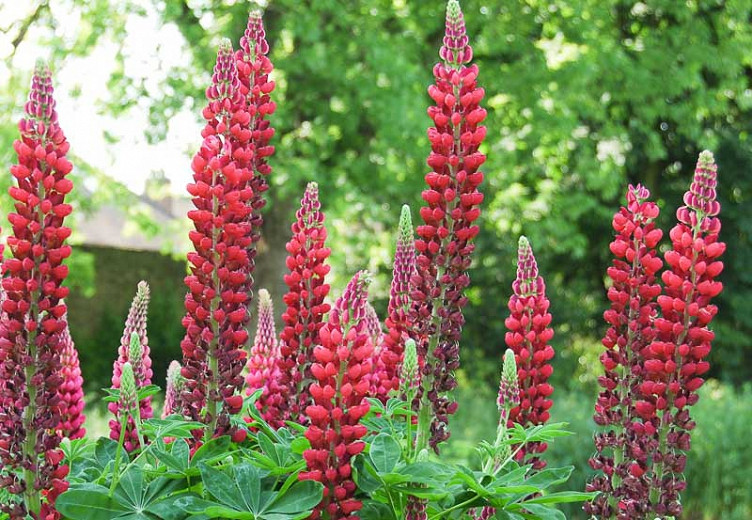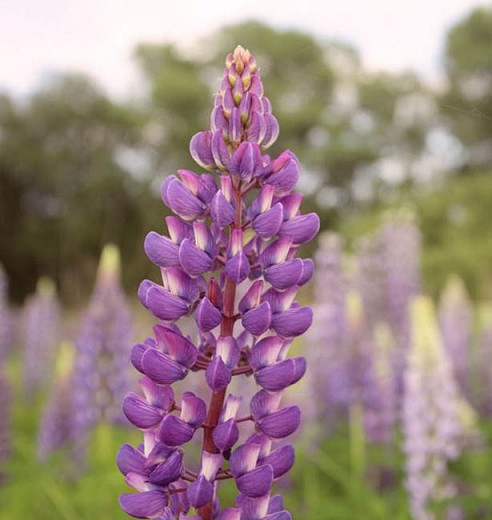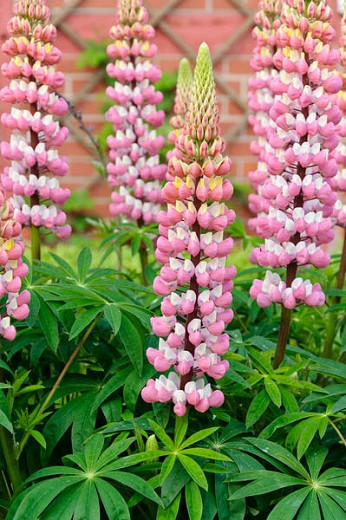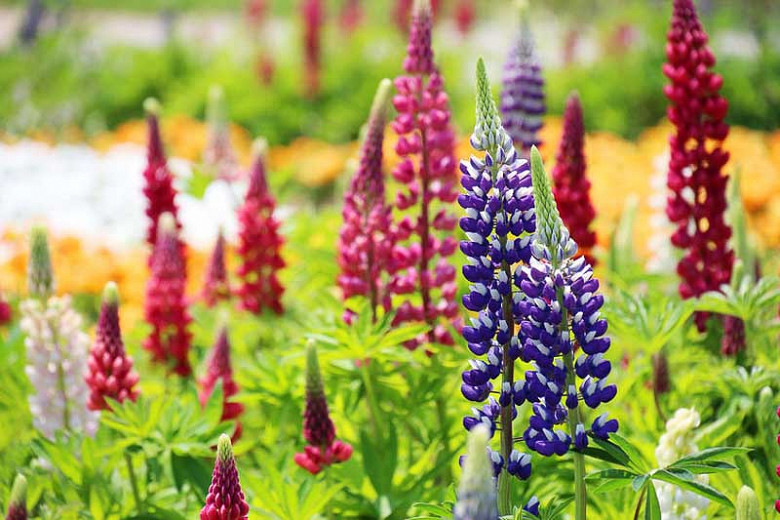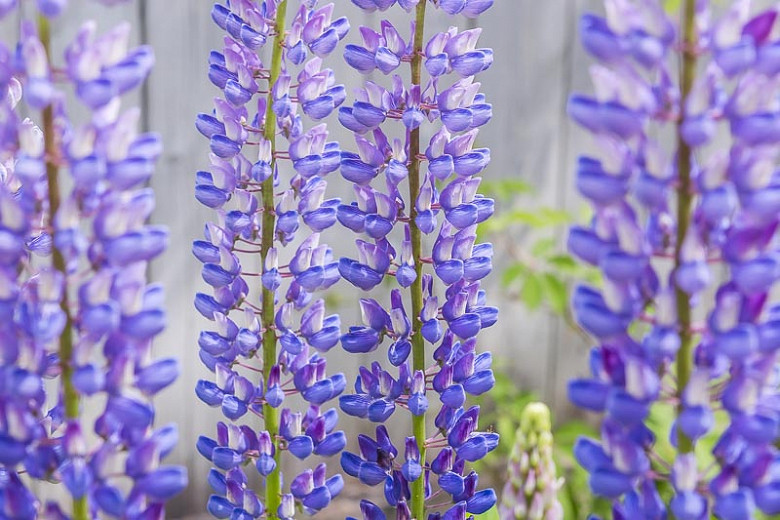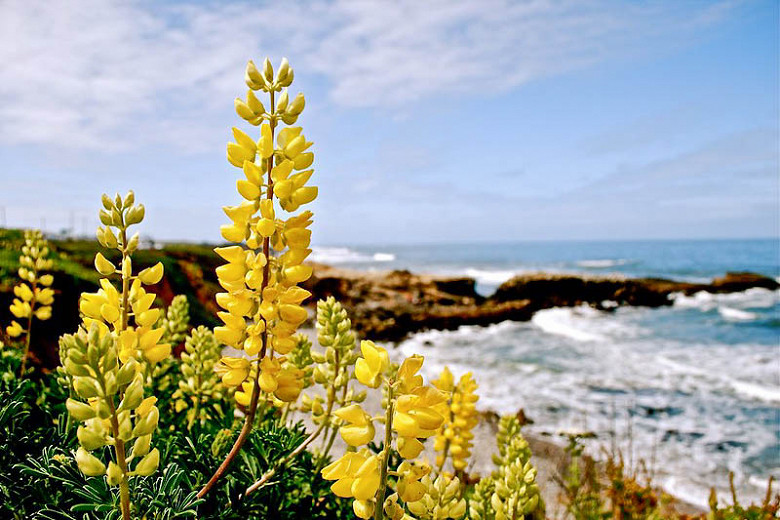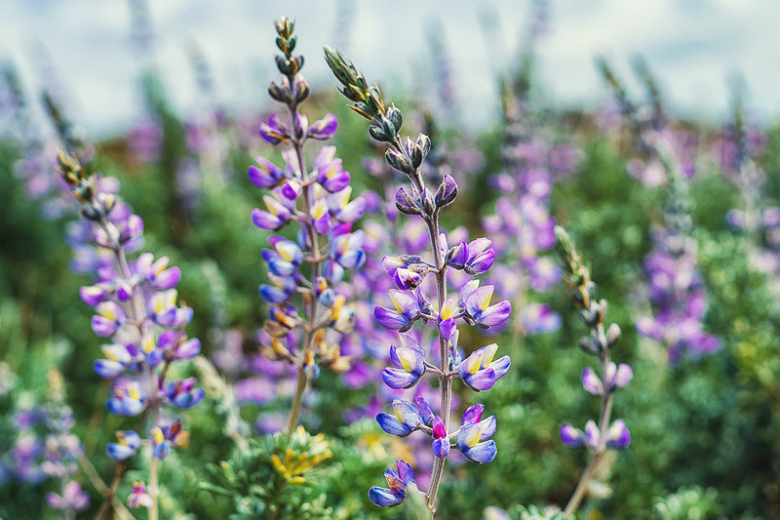Lupinus Noble Maiden (Lupine)
Gracing the garden in late spring – early summer, award-winning Lupinus ‘Noble Maiden’ (Lupine) features showy, erect spikes of densely packed, sweetly scented, ivory white flowers with some creamy hints. Rising on sturdy stems above bushy clumps of palmate, bright green leaves, the flowers open up from the bottom over several weeks, hence providing a long blooming period.
Gracing the garden in late spring – early summer, award-winning Lupinus 'Noble Maiden' (Lupine) features showy, erect spikes of densely packed, sweetly scented, ivory white flowers with some creamy hints. Rising on sturdy stems above bushy clumps of palmate, bright green leaves, the flowers open up from the bottom over several weeks, hence providing a long blooming period. Hummingbirds and butterflies are endlessly attracted to them – as are most onlookers!
- 'The Chatelaine' is a lovely member of the famous Russell Hybrid 'Band of Nobles' Series which includes fabulously colored varieties such as 'Chandelier' – Creamy primrose to golden yellow; 'My Castle' – rich rosy carmine shades; 'The Chatelaine' – soft pink with a white flag; 'The Governor' – Ultramarine blue and white flowers; 'The Pages' – gleaming brick-red.
- Vigorously grows up to 3-4 ft. tall (90-120 cm) and 12-16 in. wide (30-40 cm). Lupines are short-lived perennial plants, but they will self-sow in optimum growing conditions.
- Ignored by deer and rabbits and excellent for naturalizing.
- Won the prestigious Award of Garden Merit of the Royal Horticultural Society
- Lupines perform best in full sun in organically rich, moderately fertile, evenly moist, well-drained soils. They thrive in areas with fairly cool summers and appreciate some afternoon shade in hot summer areas. Provide a sheltered location to protect your Lupines from winds and avoid staking. Apply mulch to keep the root zones cool.
- Lupines are welcomed additions to beds, borders, and cottage gardens where they add color, height, and structure. For the best visual impact, plant your Lupines in groups. Great as cut flowers!
- Deadhead spent flower spikes to promote additional bloom and prevent undesired self-seeding. Provide good air circulation to avoid powdery mildew. Propagate by seed or cuttings in early spring
- One of the most striking perennials in the late spring garden, Lupines have long been cultivated by gardeners. With their elegant line, exquisite colors, and fine-textured foliage, they create accents and punctuation and look their best when massed or interplanted with geraniums, catmint, and English roses. Developed by English George Russell, these Russel Hybrids present one of the longest and most spectacular floral parades at that time.
- All parts, particularly the seeds, may cause severe discomfort if ingested. Toxic only if eaten in large quantities. Wear gloves and wash your hands after handling.
- Toxic to dogs, toxic to cats, toxic to horses, toxic to humans.
Requirements
| Hardiness | 4 – 7 |
|---|---|
| Heat Zones | 1 – 7 |
| Climate Zones | 3, 4, 5, 6, 7, 14, 15, 16, 17, 18, 19, 20, 21 |
| Plant Type | Perennials |
| Plant Family | Lupinus – Lupines |
| Exposure | Full Sun, Partial Sun |
| Season of Interest | Spring (Late)Summer (Early) |
| Height | 3' – 4' (90cm – 120cm) |
| Spread | 1' – 2' (30cm – 60cm) |
| Spacing | 12″ – 15″ (30cm – 37cm) |
| Water Needs | Average |
| Maintenance | Low |
| Soil Type | Loam, Sand |
| Soil pH | Acid, Neutral |
| Soil Drainage | Well-Drained |
| Characteristics | Cut Flowers, Fragrant, Plant of Merit, Showy |
| Tolerance | Deer, Rabbit |
| Attracts | Butterflies, Hummingbirds |
| Garden Uses | Beds and Borders |
| Garden Styles | City and Courtyard, Coastal Garden, Informal and Cottage |
